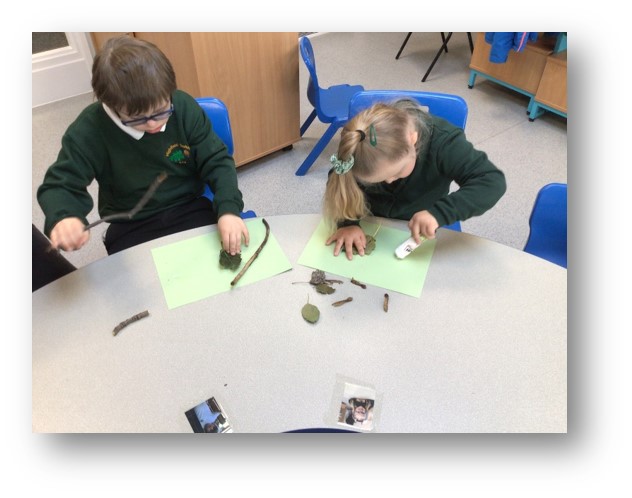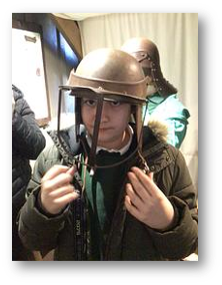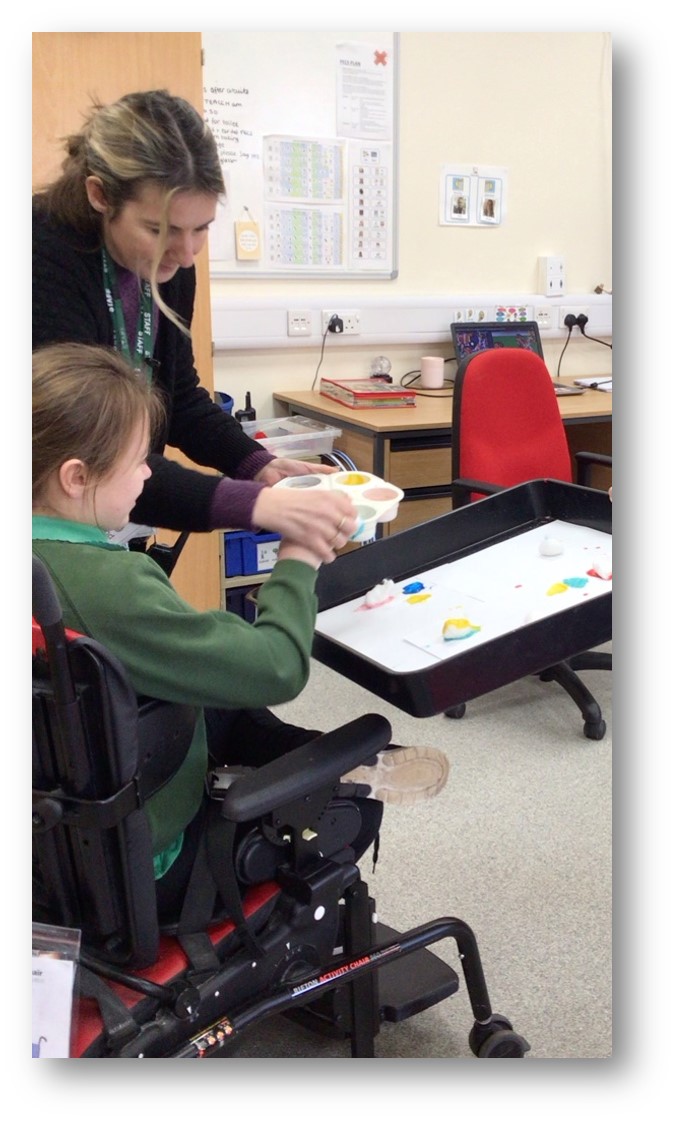Humanities
Overview
We believe that every child deserves the opportunity to explore and connect with the world around them, and geography plays a key role in making that possible.
Our geography lessons are thoughtfully adapted to provide meaningful, inclusive learning experiences. Whether it's learning about local landmarks, understanding different types of weather, or exploring world cultures, geography helps students build a sense of place, identity, and global awareness. We use a wide range of multi-sensory resources - from tactile maps and interactive displays to sensory materials and visual aids—so that every child can access learning in a way that works for them. For some, that might mean feeling the texture of sand while learning about deserts, while for others it could be exploring videos of different environments or using symbols and assistive technology to communicate what they’ve learned.
Geography also supports key areas of development:
-
Communication and language skills through discussion, description, and naming places and features
-
Cognitive development through matching, sorting, and recognising patterns in the world
-
Emotional and social understanding by exploring different communities and cultures, promoting empathy and inclusion
-
Life skills such as orientation, navigation, and understanding the local environment—all of which encourage independence
Most importantly, geography encourages curiosity, wonder, and connection. It invites all learners to ask questions, experience the world in new ways, and develop an appreciation for the environment and the people who share it. We are committed to making geography accessible, engaging, and relevant for all our students - because every child has a right to understand their world.
Blue Pathway
Geography topics are linked to the ‘My World’ area of the curriculum framework. Learning takes place in a multi-sensory and experiential manner. Pupils will be encouraged to explore and gain a deeper knowledge and understanding of the world around them. This may involve making changes to their local environment, for example through planting trees or flowers. Learning takes place with links to inspiring topics and familiar texts.
.jpg)
Green Pathway
Geography is delivered through the ‘My World’ area of the curriculum. Learning is primarily cross-curricular and integrated across various areas of the weekly timetable. For example, pupils may explore geographical concepts through outdoor learning experiences or develop an understanding of the wider environment via educational visits. Where appropriate, content may also be delivered through discrete Geography lessons tailored to the needs of the learners.
Purple Pathway

Geography is taught within the ‘My World’ area of the Purple Pathway Curriculum Framework. It is delivered in a contextual and meaningful manner, drawing on links to topics and familiar texts that inspire and challenge learners. Activities range from exploring the school and its grounds to exploring wider geographical topics such as climate change. Teaching is adapted to meet the individual needs of learners and classes.
Yellow Pathway
Geography is taught through discrete lessons. Learning takes place through topic based work and is brought to life through geographical fieldwork opportunities including map reading, planning and going on visits, orienteering and exploring the local environment.
We sequence lessons to ensure that students have covered the skills required to meet the aims of the national curriculum, making adaptations for their learning needs. The content allows for a broader, deeper understanding of the four areas of geography identified in the national curriculum. They develop contextual knowledge of the location of globally significant places and understanding of the processes that give rise to key physical and human geographical features of the world, along with how they bring about variation and change over time. Pupils develop curiosity and a fascination of the world and its people. Lessons improve children’s geographical vocabulary, map skills and geographical knowledge.
Progression
We have adapted the National Curriculum framework to meet the wide ranging needs of our pupils. Across all Pathways, learners have a range of opportunities to experience geography through practical engaging tasks beyond the classroom. Below is a snapshot of the type of learning outcomes our pupils work towards.
Blue Pathway
- Use all of their senses in hands-on exploration of natural materials
- Experience sensory experiences related to different environments in our world eg jungle, ocean etc.
- Have an understanding of familiar environments and be able to access them.
- Begin to tolerate new and unfamiliar environments.
- Notice animals in the world around them.
- Anticipate a familiar route
- Experience and respond to different weather patterns.
Green Pathway
- Find areas in a familiar environment, located by need e.g. where we cook, where we collect the dinners, where we do PE.
- Actively seek to engage in and explore aspects of unfamiliar environments.
- Recognise and identify animals and pets in the world around them.
- Respond to adult modelling and prompts about appropriate behaviour in a community setting.
- Can say what the weather is today.
- Understand that there are places away from their immediate environment.
- Begin to distinguish between simple features of different environments.
- Contribute to recycling by putting items in the green box or helping to empty recycling boxes.
Purple Pathway
- Begin to use maps and recognise physical and human features to do with the local area, building to using maps to explore the continents and oceans of the world
- Begin to compare where they live to places outside of Europe and ask and answer geographical questions
- Know that there are different countries in the world and talk about the differences they have experienced or seen in photos
- Discuss routes and locations, using words like ‘in front of’ and ‘behind’
- Know about similarities and differences between themselves and others, and among families, communities and traditions
- Know about similarities and differences in relation to places, objects, materials and living things. Begin to communicate about the features of their own immediate environment and how environments might vary from one another
Yellow Pathway
- Use basic geographical vocabulary to refer to key human features, including: city, town, village, factory, farm, house, office, port, harbour and shop
- Use world maps, atlases and globes to identify countries, continents and oceans
- Use simple compass directions and locational and directional to describe the location of features and routes on a map
- Devise a simple map; and use and construct basic symbols in a key
- Use simple fieldwork and observational skills to study the geography of the surrounding area, including key human and physical features, using a range of methods
- Develop map skills further using digital maps, more keys and symbols
- Begin to further develop fieldwork skills
- Name, locate and identify characteristics of the four countries and capital cities of the United Kingdom and its surrounding seas
- Compare the UK with a contrasting country
- Compare a local city/town in the UK with a contrasting city/town in a different country
- Use key vocabulary to demonstrate knowledge and understanding in this strand: South America, London, Brasilia, compare, capital city, China, Asia, country, population, weather, similarities, differences, farming, culture, Africa, Kenya, Nairobi, river, desert, volcano.
- Name and locate the world’s seven continents and five oceans
Impact
Impact is seen in a multitude of ways. With some of our learners, we may see increases in explorative skills, interaction, engagement and attention or showing curiosity when exploring an unfamiliar environment. Other students may show the impact of geographical learning through an increased vocabulary, development of specific knowledge and skills or the ability to have a conversation with someone about places they have visited.
Whatever the starting point of the young person, the impact of our curriculum is that they are able to interact more positively with the people, environments and places of our world.
Overview
We believe that history is for everyone. Learning about the past helps our pupils make sense of the present, and it offers powerful opportunities for connection, curiosity, and personal growth.
History lessons are carefully adapted to ensure that all learners can engage meaningfully. For some students, this may mean exploring key events and figures through storytelling, drama, or sensory experiences. For others, it might involve hands-on activities with historical artefacts, interactive timelines, or multimedia resources that bring the past to life.
History supports a wide range of developmental areas:
-
Communication and language: Discussing past events, describing people and places, and building vocabulary through themed topics
-
Cognitive skills: Sequencing events, understanding change over time, and making simple comparisons between then and now
-
Social and emotional learning: Developing empathy by learning how people lived, what they experienced, and how communities have changed
For pupils with more severe and profound needs, history can be experienced through rich, multi-sensory activities. Tactile objects, music from different eras, role play, and sensory stories allow students to access the subject in a meaningful and enjoyable way. These approaches support engagement, anticipation, and interaction, while also reinforcing core skills such as turn-taking, listening, and choice-making.
Learning about history also fosters a sense of identity and belonging. It helps learners understand their place in the world and introduces them to cultural traditions, local heritage, and global events that shape the lives of people today.
Most importantly, history encourages curiosity and imagination, qualities we nurture in every learner, regardless of level of need. We ensure that all pupils are included in exploring the past in ways that are relevant, accessible, and enriching.
Blue Pathway
Learning takes place in a multisensory and experiential manner to suit the needs of learners. Students in this Pathway may work on better understanding object permanence, so that they can consider what has happened in the past or learning may be related to the passing of time through engaging activities such as ‘Days of the week’. They will consider what has occurred in their lives so far through examining their own baby or childhood photos and they will explore historical places in our local community such as Ely Cathedral or the Oliver Cromwell museum.
Green Pathway
History is taught within the ‘My World’ area of the Green Pathway. It draws on links to topics and familiar texts that inspire and challenge learners and is taught in a practical and hands-on manner. Practical activities range from building castles using junk modelling, sampling recipes from the past or dressing up as characters from a certain historical era. Visits to The Toy Museum or Ely Museum will also take place throughout the year.
Teachers use pupils' and their families own lives and experiences to illustrate history. Students gain an understanding of how we need to respect and care for historical artefacts; begin to compare how we live today to events of the past and begin to understand how the past has shaped our world today. They know about some similarities and differences between themselves and people from the past and gain an understanding of the passing of time.
Yellow Pathway
History is taught as a discrete lesson in the Yellow Pathway. Learning takes place through topic based work and is brought to life through visits to places such as Denny Abbey Museum, the Museum of Anthropology or the Fitzwilliam Museum in Cambridge.
We sequence lessons to ensure that students have covered the skills required to meet the aims of the National Curriculum, making considered adaptations for their learning needs.
Teachers make learning more relevant and engaging by incorporating History into a cross-curricular plan to work alongside other subjects such as Design Technology, English and Art. Students gain an understanding of chronology by looking at events in a sequential order and learn about historical enquiry and the important of understanding a source's reliability.
Impact
Impact is seen in a multitude of ways. With some of our learners, we may see increases in explorative skills, interaction, engagement and attention or showing curiosity. Other students may show the impact of historical learning through an increased vocabulary, development of specific knowledge and skills or the ability to have a conversation with someone about links between past and current world events.
Overview
Our Religious Education (RE) curriculum gives students planned access to experiences that help them learn about and reflect on different religions and beliefs. This is often linked to planning around ‘big questions’, and may include opportunities to construct knowledge and reflect on different religions, beliefs and practices through stories, sensory experiences and visits. Our curriculum reflects the syllabus planned by the local SACRE (Standing Advisory Council for Religious Education) group, although many of our learners will experience this learning at a different pace and at different stages to those suggested for mainstream schools.
The religions and beliefs taught and explored initially reflect the beliefs of the students' home environments and communities, the local area, the UK and then the wider world. Our syllabus includes Christianity, Judaism, Sikhism, Buddhism, Hinduism, Islam and Humanism. Lessons often reflect the celebrations and festivals happening at that time of year in to add further meaning and a real-life aspect to the content. Lessons are planned to ensure students access teaching and experiences which enable them to both experience facts and knowledge as well as reflect on how they or others feel about a question or situation.
then the wider world. Our syllabus includes Christianity, Judaism, Sikhism, Buddhism, Hinduism, Islam and Humanism. Lessons often reflect the celebrations and festivals happening at that time of year in to add further meaning and a real-life aspect to the content. Lessons are planned to ensure students access teaching and experiences which enable them to both experience facts and knowledge as well as reflect on how they or others feel about a question or situation.
Blue Pathway
Students following the Blue Pathway are engaged in pre-formal learning, which is not subject specific. RE is incorporated into the six Pathway areas but has significant links within the My World area. Students are supported to work towards curriculum targets such as:
•Experience a range of different cultures and religions, through celebrations, stories objects and food
•Develop an understanding of places away from the immediate environment
The RE experiences planned for these students will be based on themes which are pertinent to them and the community they live within. This will include Christian themes, festivals and ideas but may also include Judaism, Islam, Hinduism, Sikhism and Buddhism beliefs, festivals, stories, places of worship, routines and celebrations. These themes are taught and experienced through sensory stories, music, tasting and sensory opportunities, massage, dance, visits and role play. The student on the right is being supported to throw paint-covered cotton wool balls after learning about the festival of Holi.
Green Pathway
Students are supported to work towards curriculum targets such as developing:
- an understanding of themselves and their own beliefs and views. The views and beliefs of people around them and to develop their knowledge of the wider world and the views and beliefs within it (the student on the left is making samosas after a lesson linked to religion in India)
- communication skills to enable themselves to express views, preferences, ideas and thoughts. They will be supported to develop their questioning skills
- positive attitudes towards other people and their right to hold different beliefs, appreciating similarities and differences in people their views and beliefs
RE also links to other areas of the Green Pathway such as My Communication; students may listen to and reflect on religious stories. My Play; students may use role play to experience and think about different ceremonies. My independence; students may develop and apply their independent skills when visiting places of worship. My Body and Wellbeing - students will have opportunities to reflect on how they feel and where appropriate how other people feel. My Thinking - Students will be supported to look for similarities and differences within belief systems, ceremonies, buildings etc
Students following the Green Pathway will have the opportunity to learn about and reflect on Christian, Islamic, Hindu, Jewish, Sikh and Buddhist themes, festivals and ideas over a 5 year period with Christian elements featuring every year. Teachers ensure that the content they present is meaningful and accessible to all including reflecting and respecting the home beliefs of students.
Purple Pathway
In the Purple Pathway, RE helps pupils to explore different beliefs, cultures, and ways of life. Through stories, celebrations, and traditions from a range of religions, pupils are encouraged to think about the world around them and reflect on their own experiences.
The Purple Pathway curriculum builds respect and understanding of diversity, while also supporting pupils to make links with their personal development. Pupils will explore how faith communities celebrate, overcome challenges, and use food and rituals in meaningful ways.
Christianity is taught each year alongside other major world religions, giving pupils a broad and balanced understanding of different faiths.
Yellow Pathway
Through learning about the major world religions, pupils are supported to develop;
-
an understanding of their own theological and philosophical views and beliefs
-
their ability to engage in discussions about world views including the ability to ask questions
-
an understanding of the main beliefs, ideas, celebrations and themes within worldviews and will notice similarities and differences between these
-
their subject knowledge of worldviews, places of worship and major religious celebrations
RE in this Pathway is taught and learned through stories, music, tasting opportunities, role play, visits and planned reflection time. Cross-curricular opportunities with other subjects are made to reinforce prior learning.
RE Annual Plan
Impact
Through our RE curriculum, our students become more open minded - they have a better understanding of a range of belief systems; an increased awareness of and reflection upon their own beliefs and those of other people. They are more able to think about and communicate their thoughts on life's big questions.
